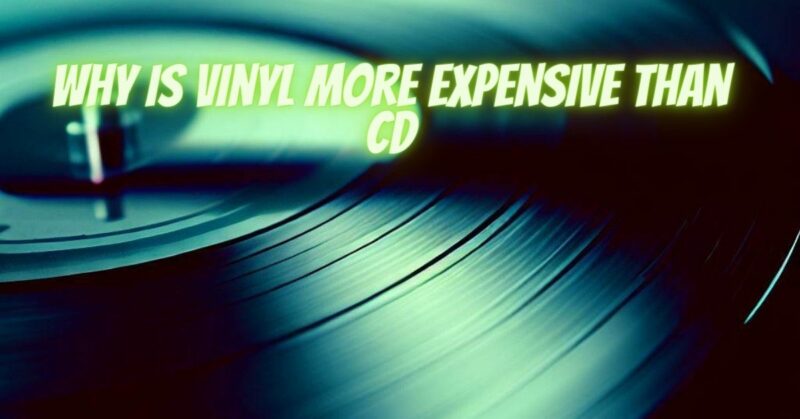Vinyl records have seen a resurgence in popularity in recent years, but they often come with a higher price tag compared to CDs. In this article, we will explore some of the reasons why vinyl records tend to be more expensive than CDs.
- Manufacturing Costs: Vinyl records require a more complex manufacturing process compared to CDs. Producing vinyl involves various stages, including mastering, plating, pressing, and packaging. These processes require specialized equipment, skilled labor, and meticulous quality control, which contribute to the higher manufacturing costs associated with vinyl records.
- Limited Production and Demand: The demand for vinyl records has increased significantly, but the overall production volume remains lower than CDs. Many artists and labels release vinyl records in limited quantities, often as special editions or collector’s items. The limited supply and higher demand drive up the prices.
- Packaging and Artwork: Vinyl records typically come with larger packaging compared to CDs, allowing for more detailed artwork, liner notes, and inserts. The larger packaging requires more materials and adds to the overall production and packaging costs. The additional attention to detail and aesthetic appeal contribute to the higher price point.
- Niche Market and Target Audience: Vinyl records cater to a specific audience of music enthusiasts, collectors, and audiophiles who appreciate the analog sound, tactile experience, and visual aesthetics of vinyl. The smaller target audience compared to CDs means that the production and distribution costs are spread across a smaller consumer base, resulting in relatively higher prices.
- Quality Control and Inspection: Vinyl records are prone to imperfections and quality issues during the manufacturing process. Scratches, warps, and pressing defects can occur, and each record needs to be carefully inspected to meet quality standards. This additional quality control process adds to the overall production costs.
- Rarity and Collectibility: Vinyl records, especially older or rare releases, can become highly collectible, driving up their market value. Limited editions, colored vinyl, and rare pressings are often sought after by collectors, and their scarcity contributes to the higher prices in the second-hand market.
Conclusion:
Vinyl records tend to be more expensive than CDs due to factors such as higher manufacturing costs, limited production, specialized packaging, niche market demand, quality control requirements, and the collectible nature of vinyl. While CDs offer a more cost-effective and mass-produced music format, vinyl records provide a unique listening experience, tangible appeal, and a connection to music history and culture. The higher price tag associated with vinyl records reflects the craftsmanship, limited availability, and the demand from dedicated music enthusiasts and collectors. Ultimately, the choice between vinyl and CDs depends on personal preferences, sound aesthetics, and the value one places on the overall experience of music consumption.


